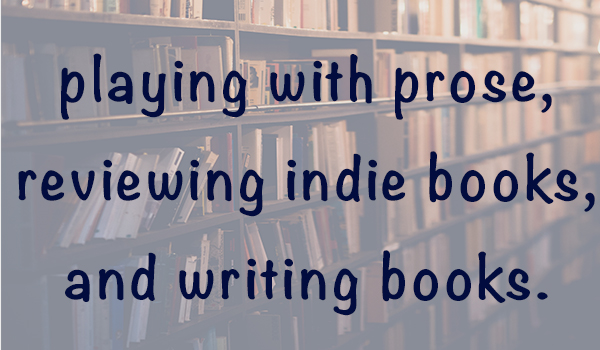
# Blog 53: A Third for Tea
Blog 53
Hello everybody, today we have a piece titled A Third for Tea by CrissMiss on Writing.com.
Paragraph 1
“Daddy, who is Jesus?” Cindy asked as she got ready for their weekly tea party.
As opening paragraphs go there’s not much to discuss here. It inserts the readers directly into the story while indicating what kind of story it will be. It’s not a violent or intensely active opening, but it puts a narrative conflict on immediate display.
As for the technical elements on this paragraph there’s only two suggestions I might offer. We can reduce ‘got ready’ to ‘prepared’ cutting one word and resulting in a smoother sentence. That aside, the sentence/paragraph might benefit from some more scene setting or a more physical/in depth description of ‘preparing for the tea party, just something that fills out and defines the scene and gives the reader something physical to grasp and imagine so the character’s aren’t floating in a nebulous story-scape.
—”Daddy, who is Jesus?” Cindy asked as she prepared for their weekly tea party.—
(Cindy sets out plates and cups later in the story and I’m unsure as to the type of table the author envisions. It’s presumably a short plastic table since Cindy—at six years old—arranges chairs around it, but I have no confirmation of that. All of this leaves only a table cloth as potentially more specific action than ‘prepared’. I considered versions of ‘As she spread/draped a table cloth for their weekly tea party’ maybe with her standing on a chair to do it with some additional description of the table—If I could find a way to avoid the echo of ‘table’— but ultimately couldn’t find a version I liked. And that, coupled with the fact that I have no idea if there even would be a tablecloth for imaginary tea and cookies, resulted in me leaving the sentence mostly as it was. I still believe an appealing description would improve the paragraph
I’m combining the next two paragraphs because they deal with the same subject.
Paragraph 2
Sunday was Cindy’s favorite day of the week. She got to have her Daddy all to herself for the whole afternoon. Her Daddy was her favorite person in the whole wide world. He knew just about everything.
These sentences read slightly clunky because they’re flat statements instead of a flowing narrative. (Flat statements have a hard conclusion meaning there’s no momentum into the next sentence, which results in the subsequent sentence having a stiff opening.) Some of this is due to the author trying to curate a childlike air to their prose, using simplified, blunt thoughts. This makes it somewhat difficult to edit because we not only have to juggle the prose and rhythm, but the desire tone as well.
All that aside, there are several immediate phrases that we can cut. ‘Of the week’ from the first sentence as that is understood since Sunday without a date attached can only be viewed in the context of the week. (it can’t be month or years because then there would be multiple Sundays.) Then we can probably delete ‘to have her’ as unnecessary and nonconductive to the desired childlike tone since ‘got’ and ‘daddy’ convey that effectively here. Rhythmically I would have preferred to delete ‘for the whole afternoon’ but that specification is relevant. ‘Entire’ helps smooth out the rhythm but does sacrifice some of the child aspects because it’s a more advanced word. We may be able to stomach that sacrifice, however.
—Sunday was Cindy’s favorite day because she got Daddy all to herself for the entire afternoon and he was her favorite person in the whole world. He knew everything.—
So I combined the first three sentences for rhythm, combining the first two with a ‘because’ (which was always present in implication if not physically) to convert them into one thought. Then I added the third sentence with an ‘and’ because it combined well with its predecessors, combining smoothly into a single long thought. And you can probably see why I combined these into one paragraph, they’re all related to and building off one another. Combining them further into one sentence emphasizes and unifies their interactions. I left the final sentence on its own because it being written as a flat statement serves the paragraph to some extent, acting as a capstone and emphasizing the awe with which she views her father. Italicizing the ‘everything’ further illustrates her awe, while feeding into the desire childlike aspect with the emphasis (which also helps the rhythm strangely enough since emphasizing ‘everything’ in a child’s voice gives it a higher pitch in the mind, and thus more texture to the statement.) I deleted ‘just about’ as needlessly specific since a six-year-old child believing her father knows everything is not inconceivable, and the additional words only clogged the sentence without adding to the desired tone. (Nothing about them or their structure was inherently childlike.)
For the next paragraph I want to display it in context with its predecessors because I have a point to illustrate.
—”Daddy, who is Jesus?” Cindy asked as she prepared for their weekly tea party.
Sunday was Cindy’s favorite day because she got Daddy all to herself for the entire afternoon, and he was her favorite person in the whole world. He knew everything. This Sunday was particularly important becauseCindy’s friend, Jessica, had told her there is a good man named Jesus who is with us all the time. Cindy wanted to know more about him.—
What I want to illustrate is the sequence of paragraph. We start with the introduction of the topic in Jesus and the tea party then the paragraph ends. Then we’re talking about Sunday, which has no relation to the narrative previous introduced. It manifests into a comment about her father, which is related since she’s talking to him, but it still starts as an out of nowhere topic and interrupts the flow of the story. Even in its grandeur scheme, the sentence being about her father is interruptive since the opening paragraph and story isn’t about her father. Then we start the third paragraph and resume the narrative or of Jesus. Unless you’re actively seeking to disrupt the reader, you want shared thoughts, descriptions, and themes together and not scattered through several other comments. (In the case of environment description you can space that out a little more, conveying it in drips as ancillary information attached to the main narrative, but you don’t want a full sentence dedicated to description shoved between two simultaneous or immediately subsequent actions because it’s unpleasant to read and destroys momentum.)
As for the paragraph itself, it switches to present tense where its predecessors were past so we’ll need to correct the ‘is’ from ‘this is a’ and ‘who is’ and ‘us all’ to ‘all of them’. That or we would need to insert the quotation marks (possibly italics if this is internal) to indicate she’s quoting Jessica rather than remembering. Other than that, I would just adjust ‘who is’ to ‘who’s’ because that cuts a syllable and thus reads better due to the sentence’s length and because it reduces the number of glue words in a sentence with a fair amount of them. But I would still like to adjust the interruption of the middle paragraph. First I’ll try rearranging them slightly.
Sunday was Cindy’s favorite day because she got Daddy to herself for the entire afternoon and he was her favorite person in the whole world. He knew everything and this Sunday was particularly important becauseCindy’s friend, Jessica, had told her about a good man named Jesus who was with them all the time. Cindy wanted to know more about him.
“Daddy, who is Jesus?” Cindy asked as she prepared for their weekly tea party.—
There’s a few small changes: I deleted the ‘all’ from ‘all to herself’ because it read better without it (in my opinion) and I swapped ‘had told her there is/was’ to ‘had told her about,’ again because I thought it read better. Finally I added ‘and this Sunday was particularly important) because I really liked how that connected the progression of thoughts into one narrative. Combining the ‘he knew everything’ into the same sentence as ‘Jessica had told her’ also links that thought/comment more directly with ‘Cindy wanted to know more about him’ and those are two directly related sentence, so they both benefit from it. (Again building cohesion in the paragraph and narrative.)
What this sacrifices is the immediate narrative introduction that starting with ‘Who is Jesus’ provided. That’s not a huge issue for me considering what we gain, but it does have the effect of making the question ‘who is Jesus’ an inevitable, and thus known and boring follow-up. It’s such an obvious follow-up/is led into so heavily that it rings bells in my head of repetition and ‘telling the readers something they already know’.
Still, I think it reads mostly fine so we’ll leave it here.
That will be all for today. If you liked my work, consider subscribing.
If you like what you read, check out the rest of the story and some of the author’s other works.https://www.writing.com/main/portfolio/view/crissy

